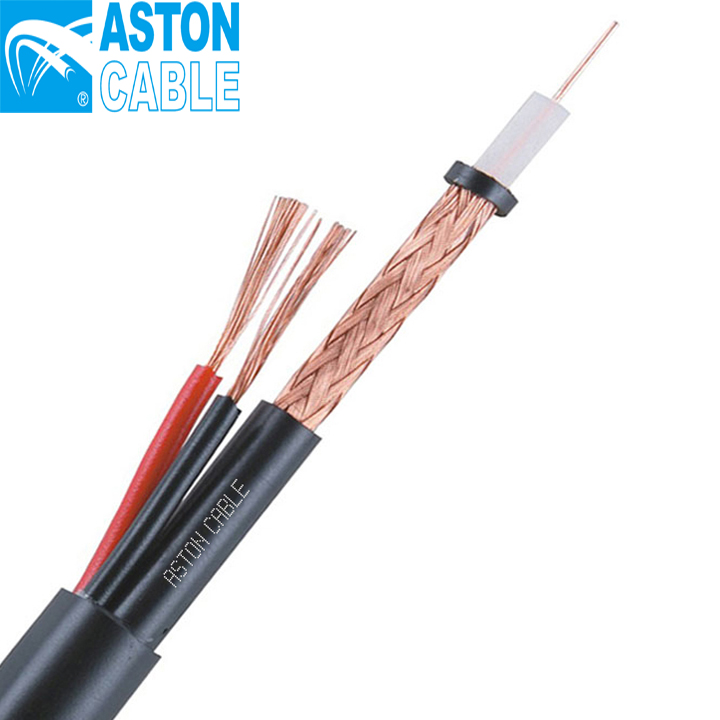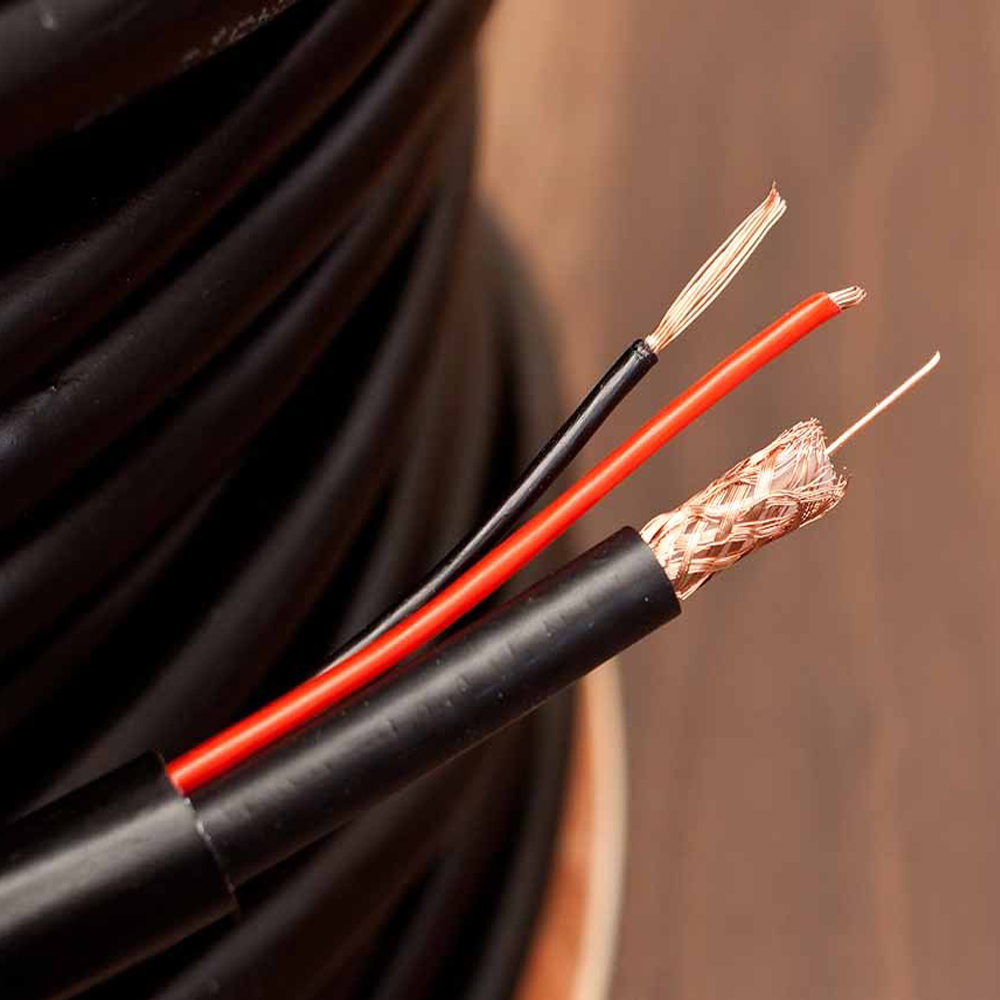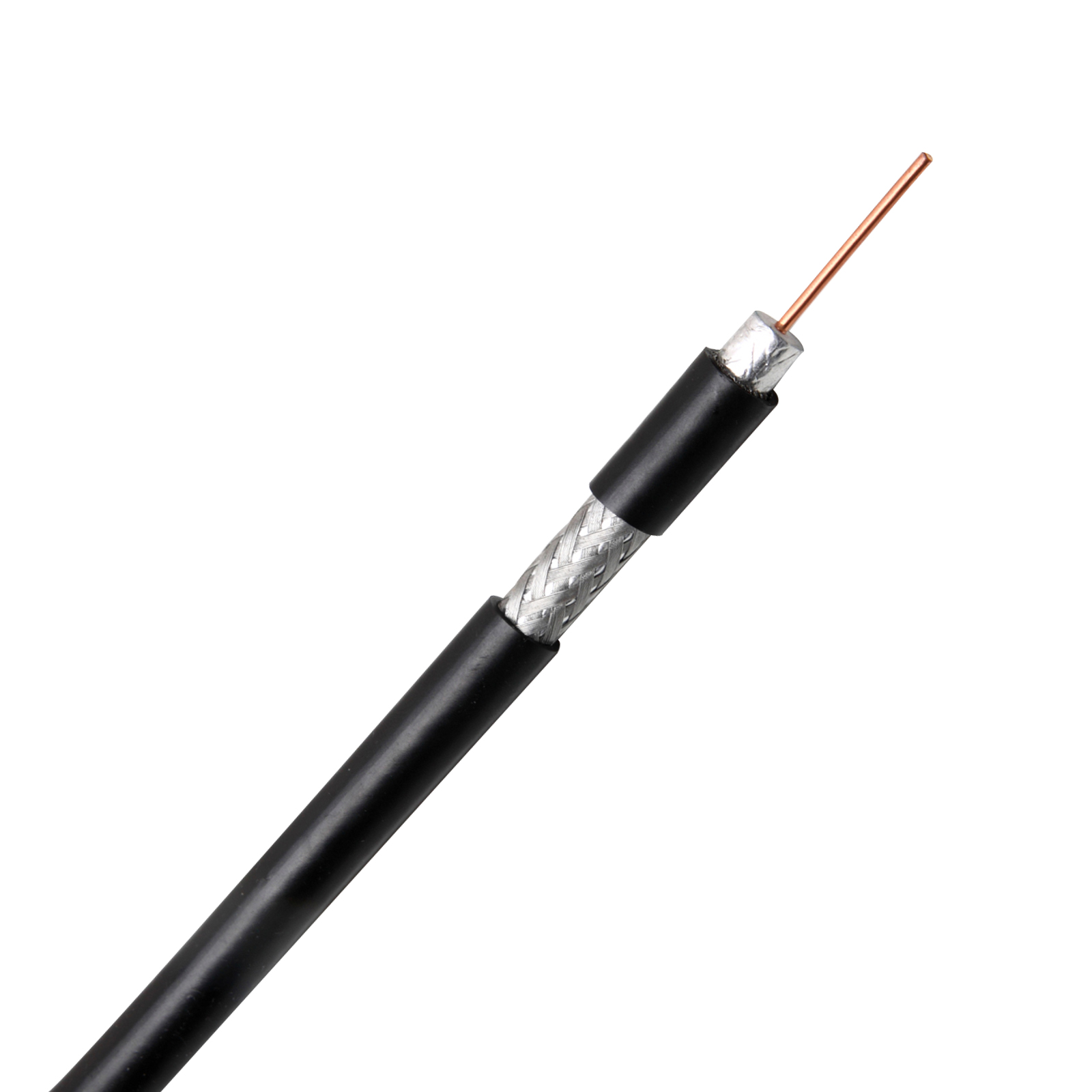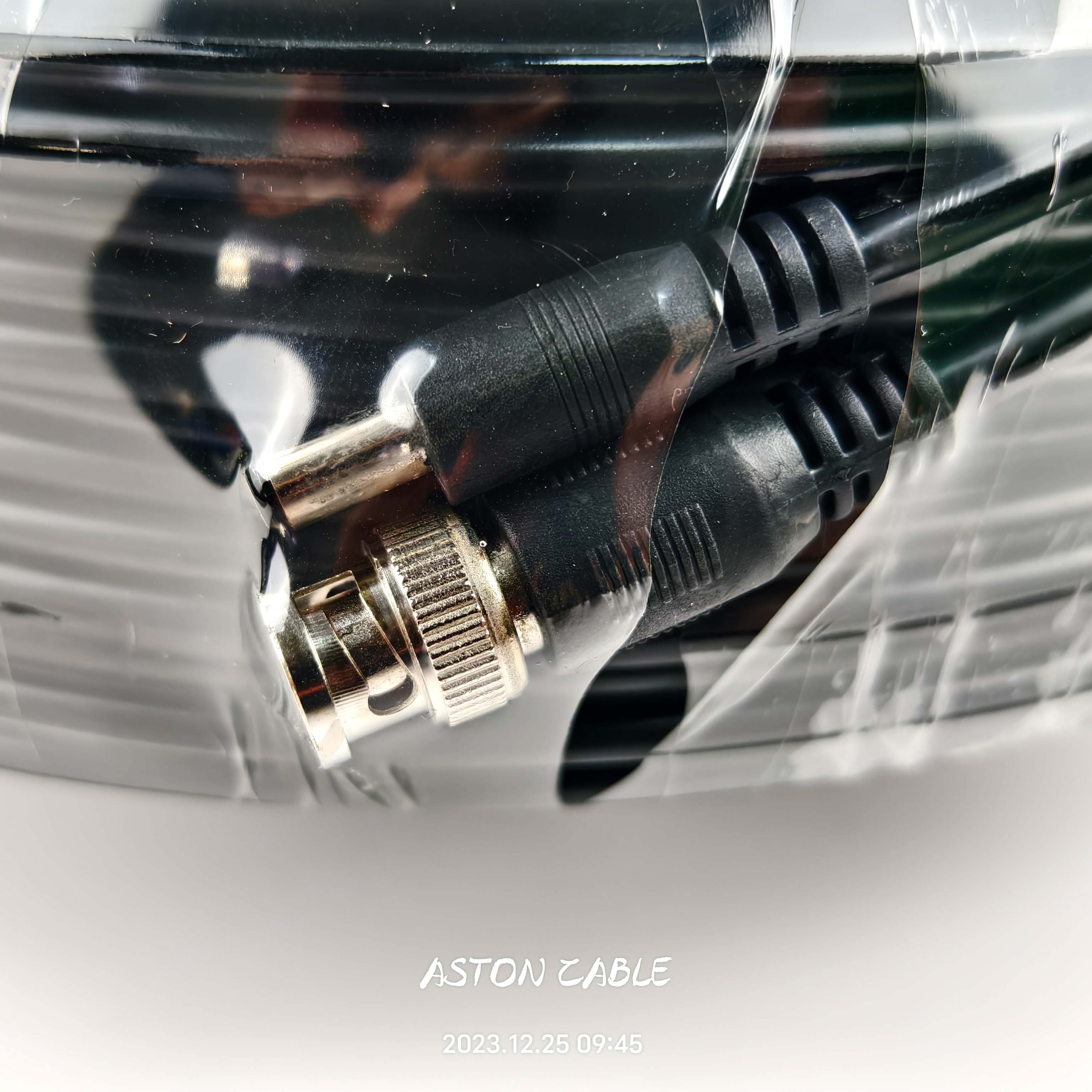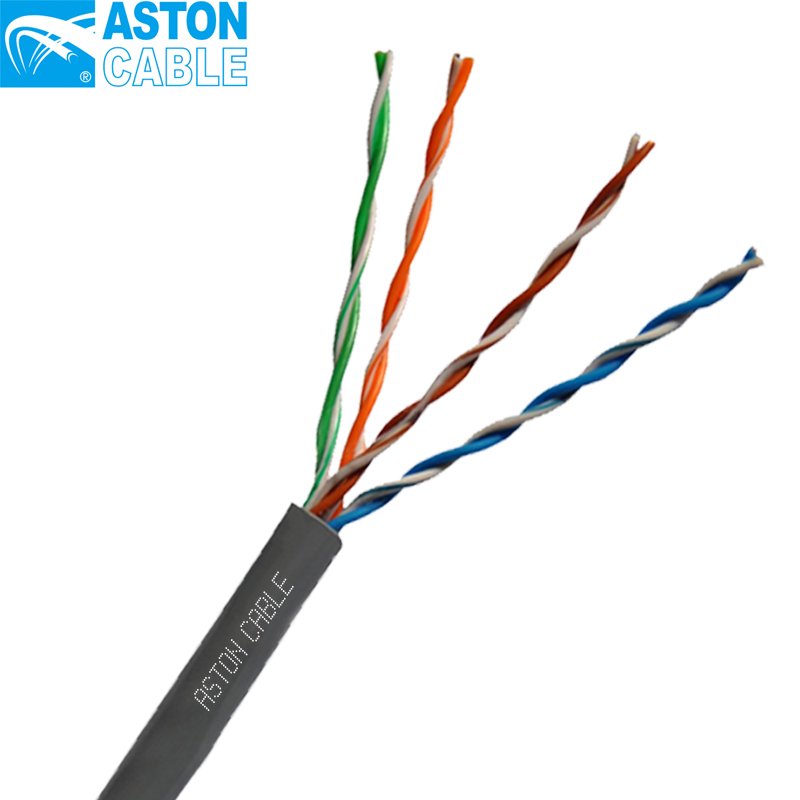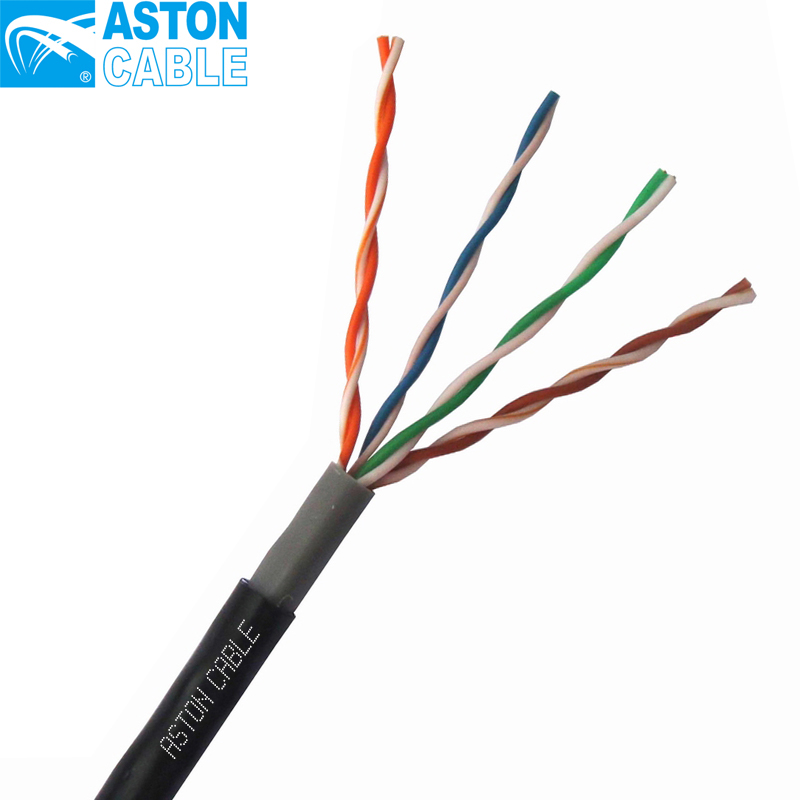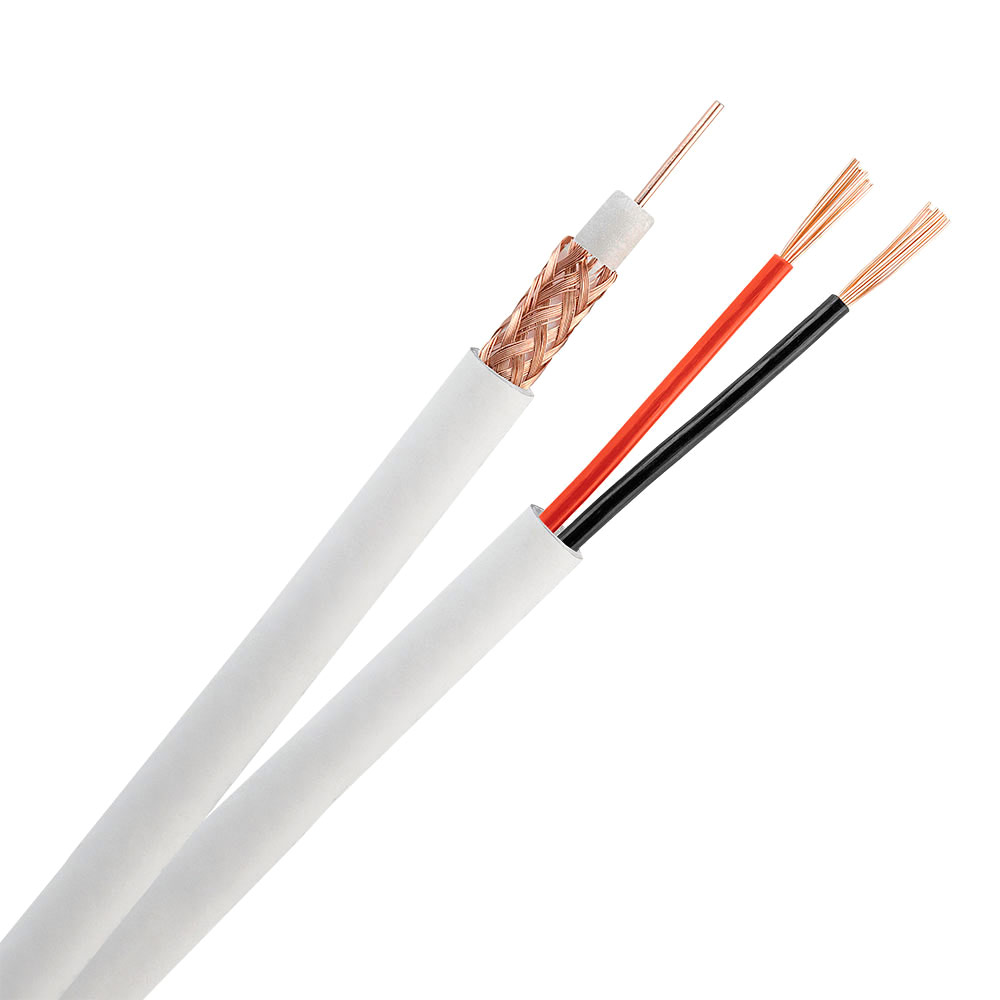Product Main Parameters
| Parameter | Details |
|---|---|
| Conductor | 0.81mm 20AWG CCS |
| Dielectric | 3.7FPES |
| Shield | Bond al foil 128*0.12AL/CCA braiding |
| Jackets | PVC for indoor/Black PE for outdoor |
| Color | Customized |
| Impedance | 75 ohms |
Common Product Specifications
| Specification | Details |
|---|---|
| Operating Frequency Range | Up to 3 GHz |
| Shielding Coverage | 95% or more |
| Jacket Material | Polyethylene |
| Connector | BNCDC |
Product Manufacturing Process
The manufacturing of RG59 cables involves several key stages to ensure quality and durability. Initially, the conductor is formed by coating copper-clad steel (CCS) to achieve the required electrical properties. The dielectric material, typically foamed polyethylene, is extruded around the conductor to provide insulation and maintain the cable's characteristic impedance. Aluminum foil and braiding are applied for shielding against electromagnetic interference, ensuring 95% coverage or more. The outer jacket is then extruded using materials like PVC or PE, depending on the intended application. Each stage is monitored with stringent quality controls, ensuring compliance with international standards. Studies highlight that improvements in coaxial cable shielding and insulation have significantly reduced signal loss and external interference, enhancing performance reliability.
Product Application Scenarios
RG59 cables are widely used in low-frequency video and RF signal transmission due to their cost-effectiveness and adequate performance for various applications. They are commonly installed in CCTV systems to transmit video signals between cameras and monitors. Additionally, RG59 cables are utilized in satellite and cable television setups, where longer cable runs are required. Their ability to maintain signal integrity over moderate distances without significant loss makes them suitable for urban residential installations where cost is a factor. Research shows that optimizing the cable's impedance and shielding improves signal quality and reduces interference in crowded electromagnetic environments. Customers seeking reliable yet cost-efficient solutions for video surveillance and basic television setups often choose RG59 cables.
Product After-sales Service
We offer comprehensive after-sales service to ensure customer satisfaction. If there are any issues with the RG59 cable, customers can contact us for support. Our team provides troubleshooting assistance, replacement parts, and guidance on installation and maintenance. We also offer a warranty on our products to guarantee peace of mind. Our commitment to quality service has earned us the trust of our clients, as evidenced by positive feedback and repeat business.
Product Transportation
Our RG59 cables are packaged in various formats, such as coil reels, plastic drums, or wooden drums, ensuring safe and convenient transportation. We collaborate with reputable logistics providers to deliver products efficiently to our customers worldwide. Depending on the order size and destination, delivery times may vary, but we strive to meet agreed timelines and provide tracking information. Our network of suppliers enables competitive rg59 cable pricing while maintaining reliable supply chains.
Product Advantages
- Cost-effective for CCTV and basic cable installations.
- Reliable signal transmission over moderate distances.
- Customizable for various environmental needs with different jacket materials.
- High shielding efficiency reduces electromagnetic interference.
- Backed by professional after-sales support and warranty.
Product FAQ
- What length of RG59 cable should I purchase?
Your required length depends on your installation needs. Suppliers offer various lengths at competitive rg59 cable prices, typically ranging from 100 to 1000 feet. Consider factors such as cable routing and potential future expansions.
- What is the difference between RG59 and other coaxial cables?
RG59 cables are ideal for short to moderate runs and are cost-effective for CCTV and basic TV installations. In contrast, other cables like RG6 provide better performance for longer distances and higher frequencies, impacting the rg59 cable price.
- Can RG59 cables be used outdoors?
Yes, when equipped with a suitable outdoor-rated jacket, such as PE. Suppliers typically offer both indoor and outdoor variants. Ensure you specify your needs when inquiring about rg59 cable prices.
- How does the shielding affect RG59 cable performance?
Shielding reduces electromagnetic interference, crucial for maintaining signal integrity. RG59 cables with high shielding coverage are available from suppliers at varying rg59 cable prices, balancing cost and performance needs.
- Are there different conductor materials for RG59 cables?
Yes, common materials include copper-clad steel and solid copper. Solid copper offers superior performance but may affect the rg59 cable price. Discuss options with suppliers based on your specific requirements.
- What connectors are compatible with RG59 cables?
Common connectors include BNC and RCA. Suppliers often provide cables with pre-attached connectors or in bulk for custom installations. Inquire about rg59 cable prices for different configurations.
- How do I determine the quality of RG59 cables?
Assess the cable's impedance, shielding, and conductor material. A reputable supplier will provide detailed specifications and test results. Price variations may also indicate quality differences among rg59 cables.
- What are the RG59 cable packaging options?
Packaging options include coil reels, plastic drums, and wooden drums. Choose based on your storage and handling needs. Suppliers may offer discounts based on packaging type or order quantity, impacting rg59 cable prices.
- How does the jacket material affect RG59 cable selection?
Jacket material determines the cable's suitability for different environments. Indoor jackets (PVC) and outdoor jackets (PE) are available. Discuss your specific application with suppliers for optimized rg59 cable prices.
- Do RG59 cables require specific installation tools?
While standard coaxial cable tools often suffice, specific installations may need specialized equipment. Consult suppliers for recommendations and inquire how installation complexity might affect rg59 cable prices.
Product Hot Topics
How suppliers contribute to competitive rg59 cable prices? Suppliers play a crucial role in determining rg59 cable prices by managing production costs, optimizing supply chains, and adjusting prices based on market demands. Supplier diversity and competition often lead to more options for buyers, enabling them to select products that fit their budget without sacrificing quality. By maintaining efficient manufacturing processes and effective logistics, suppliers can offer competitive pricing while ensuring the availability of different cable lengths and specifications that cater to various customer needs.
The impact of technological advancements on rg59 cable price? Technological progress in materials and manufacturing techniques can influence rg59 cable prices. Innovations that enhance signal quality, durability, and production efficiency help suppliers offer better products at competitive prices. For instance, improved shielding technology reduces interference and signal loss, which enhances the cable's performance. As these advances become standard, prices may stabilize or decrease, allowing suppliers to provide high-quality cables at reasonable costs, meeting growing consumer expectations for value and performance.
Image Description
